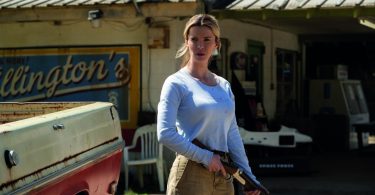It was -2 Degrees Celsius, and that wasn’t even a cold winter’s day. The freezing cold wormed its way through every single gap in my clothes.
It was -2 Degrees Celsius, and that wasn’t even a cold winter’s day. The freezing cold wormed its way through every single gap in my clothes. I had three layers on as well as gloves, a hat and a scarf but it was still mind numbingly cold and the temperature lowered even more as the darkness of night swallowed us.
That is probably the most physical reaction I had when visiting Auschwitz Birkenau for the day. It was indescribably, unpleasantly cold. I couldn’t think, I couldn’t feel my toes, I could barely move. I couldn’t properly cope with the magnitude of it all. I was overwhelmed by the scale of the remains of the Concentration Camp. I couldn’t see the edges of it, from almost anywhere I stood—it is enormous.
Last week The Independent’s announcement that a new documentary about the Nazi death camps is to be screened next year has caused controversy. Not usually a reason for controversy but this is no usual documentary. Assembled by the master filmmaker Alfred Hitchcock, the documentary is made from real footage filmed by Russian and Allied troops when they liberated the Nazi death camps in 1945.
The “Master of Suspense” and the genius behind modern horror films is said to have been shocked and appalled when he saw the footage of the camps; this was not an invention about a murderer in a roadside motel, this was “the real thing.”
Not easy to watch
Seeing the enormity of such atrocities can be a very difficult idea for a person to handle. In Birkenau I walked through a grim museum showing the collections of suitcases piled higher than you could imagine, human hair – scalped from victims – filling a room. This is a subject incredibly difficult for any sane person to comprehend; it just doesn’t seem possible for such things to have happened.
It feels more comfortable in the dry pages of history books or the lessons of teachers; that way we can distance ourselves from the horror of what happened in the Holocaust.
But the subject shouldn’t be comfortable at all, people have criticised the decision to show this documentary because in it is footage which is undoubtedly horrifying. Reports speak of images of naked human bodies in piles being thrown into mass graves, of emaciated figures clinging on to life—it won’t be an easy watch.
I won’t forget
Early screenings have suggested that the intense nature of seeing it on a big screen – one almost impossible to turn away from – is disturbing, both terrible and brilliant at the same time.
From my experience, though, that is the only way to learn about the Holocaust. To truly learn the lessons of such horrible and disgusting discrimination and murder is to immerse yourself in it, ensure that it feels as if it isn’t something which happened a long time ago.
“People are more civilised now, we’d never do that again” is a thought which is easy to think and understandably so, but then the people of the 1930s thought the same—they knew what had happened in the Trenches of WW1 and never wanted to repeat it.
You or I will never be able to fully comprehend what it was like for the people in those camps. But this film may help to remind us of the atrocities of Nazi Germany as keenly as I remember the freezing cold of Birkenau.
Yet, the most horrifying aspect of this biting cold still haunts me to this day. I was wearing three layers—the victims of the camp wore only cruelly thin rags. A thought I will never forget.
Have your say in the comments section below.
Photo by the author.








